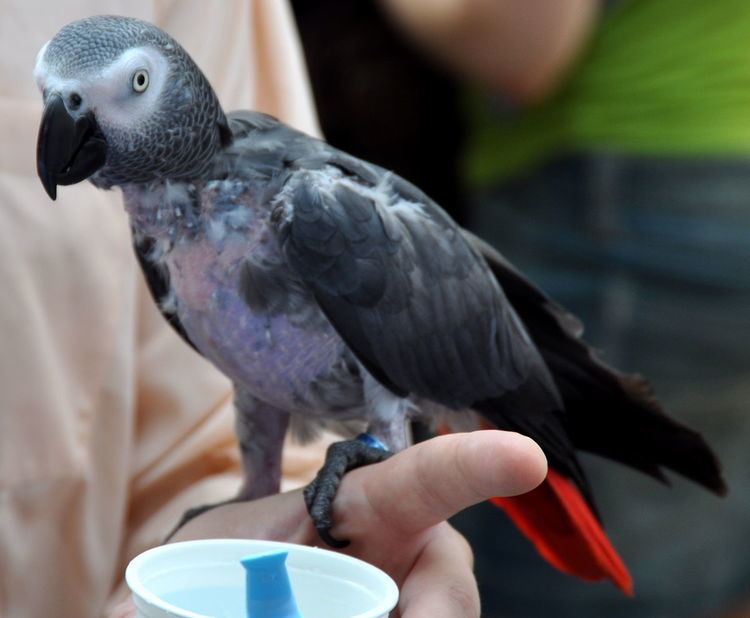 | ||
Abnormal behaviour of birds in captivity can be defined in several ways. Statistically, 'abnormal' is when the occurrence, frequency or intensity of a behaviour varies statistically significantly, either more or less, from the normal value. This means that theoretically, almost any behaviour could become 'abnormal' in an individual. Less formally, 'abnormal' includes any activity judged to be outside the normal behaviour pattern for captive birds of that particular class or age. For example, running rather than flying may be a normal behaviour and regularly observed in one species, however, in another species it might be normal but becomes 'abnormal' if it reaches a high frequency, or in another species it is rarely observed and any incidence is considered 'abnormal'. This article does not include 'one-off' behaviours performed by individual birds that might be considered abnormal for that individual, unless these are performed repeatedly by other individuals in the species and are recognised as part of the ethogram of that species.
Most abnormal behaviours can be categorised collectively (e.g., eliminative, ingestive, stereotypies), however, many abnormal behaviours fall debatebly into several of these categories and categorisation is therefore not attempted in this article. Abnormal behaviours here are considered to be related to captive housing but may also be due to medical conditions. The article does not include behaviours in birds that are genetically modified to express abnormal behaviour.
When housed under captive or commercial conditions, birds often show a range of abnormal behaviours. These are often self-injurious or harmful to other individuals, and include:
When analyzing the behaviour of birds in captivity, what is considered normal or abnormal behaviour is dependent on the form and frequency that the particular behaviour is expressed in the natural environment. Birds raised in pet stores tend to be raised with other birds, however, after being sold and taken to the owner's home, birds in captivity are often housed in isolation and in environments lacking abundant resources or complex stimuli. In the United States, it is estimated that forty million birds are kept caged and improperly cared for. Because of these inappropriate housing conditions, abnormal behaviour patterns may appear in caged birds kept as pets. Once established, these abnormal behaviours in birds are often not alterable.
When social interactions amongst birds are absent or inadequate, abnormal social behaviour may develop. For example, a study regarding parrots that had been isolated in cages demonstrated that most birds showing this social deprivation had significant behavioural disturbances, such as aggressive behaviour, feather picking, self-mutilation, restlessness, screaming, apathetic behavior, and stereotypies. Cannibalism often occurs in large animal husbandry systems, which are usually impoverished environments with a lack of opportunities. In addition, studies of caged canaries have revealed two common stereotypies. These include spot picking, where birds repeatedly touch a particular spot in the environment with the tip of their beak, and route tracing, a pacing behaviour associated with physical restrictions in movement imposed by the cage. The absence of song learning in zebra finches has also been implicated as a behavioural abnormality. In these birds, the social interaction of a young male with his song tutor is important for normal song development. Without the stimulus, the song, which is necessary for mating behavior, will not be learned.
Researchers have analyzed ways to alleviate some abnormal behaviours in caged birds. Presenting these birds with novel stimuli e.g. a mirror or plastic birds, and social stimuli, such as a brief view of a bird in another cage, significantly reduced stereotypies. In addition, it has been suggested that keeping caged birds in pairs or small groups may reduce the development of abnormal behaviours, however, little quantitative evidence has thus far been collected to support this claim.
